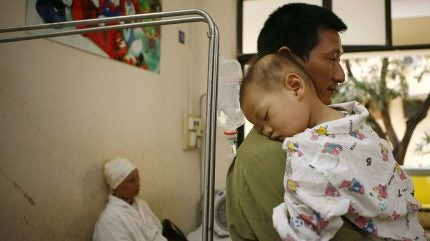
Leaders from the National Comprehensive Cancer Network (NCCN) alliance of US cancer centres are in Vietnam today (1 November) as part of a continuing collaboration to improve cancer care standards throughout the country.
The partnership with the Vietnam National Cancer Hospital and the Vietnam Cancer Association is focused on developing a version of the NCCN Harmonized Guidelines – a framework for improving and standardising cancer care – for use in Vietnam.

Discover B2B Marketing That Performs
Combine business intelligence and editorial excellence to reach engaged professionals across 36 leading media platforms.
As part of the visit, NCCN chief executive Crystal S Denlinger will be presenting on the development and implementation of NCCN resources in Vietnam and worldwide at the ‘Best of ASCO 2024: Multimodality Treatment of Cancer and Hospital Management in the Digital Era’ event, hosted by Vietnam National Cancer Hospital (K Hospital).
Denlinger explained: “By tailoring the NCCN Guidelines to fit local needs, we can make significant strides in improving patient outcomes and ensuring that all people facing cancer in Vietnam receive the highest quality of care.”
A particular issue in the Vietnamese healthcare system is chronic overcrowding in urban hospitals. In January, the US International Trade Administration (ITA) reported that hospitals in Hanoi and Ho Chi Minh City were receiving up to 60% of the country’s patients and operating at a 200% capacity.
Other stumbling blocks to providing effective oncological care in Vietnam include a shortage of qualified medical professionals, with potential new staff deterred by relatively low wages. Most public hospitals in the country also struggle with the lack of up-to-date equipment, which slows down diagnoses and limits treatment options.
Equipping Vietnamese hospitals
Hospitals rely on the state budget to upgrade facilities, but financial constraints delay progress. The Economist Intelligence Unit (EIU) reported that, in 2022, Vietnam’s healthcare expenditure was approximately $18.5bn, representing 4.6% of the country’s GDP – half of the OECD average of 9.2%. However, a growing demand for healthcare services has increased pressure, and the government has worked to encourage the importation of medical equipment where local production cannot meet demand.
In 2022, Vietnam’s medical device market was valued at $1.5bn, and the ITA forecasts a compound annual growth rate (CAGR) of 9.7% from then through 2026, with the value to reach $2.1bn. As a result of low import duties and no quota restrictions, more than 90% of the country’s medical equipment is imported.
GlobalData’s 2022 ‘Vietnam Healthcare Market‘ report said of increased demand from the country: “The medical device industry in Vietnam has emerged as one of the most promising industries for international investment as demand for medical equipment continues to rise. To support business, the local government has provided tax concessions such as corporate income tax incentives, import duty reductions, quota exemptions and land leasing fee exemptions or reductions.”

US Tariffs are shifting - will you react or anticipate?
Don’t let policy changes catch you off guard. Stay proactive with real-time data and expert analysis.
By GlobalDataGlobalData is Hospital Management’s parent company.
Cancer in Vietnam
The most common cancer in Vietnam is breast cancer, which accounted for 24,563 (13.6%) of cases in 2022. It is closely followed by liver cancer, which accounted for 24,502 cases (also 13.6%), and lung cancer, which comprised 24,426 (13.5%).
The first set of NCCN Harmonised Guidelines for Vietnam is already available, and they focus on non-small cell lung cancer (NSCLC). Current efforts are focussed on the development of Harmonsed Guidelines for breast cancer and liver cancer, with more cancer types to follow.
K Hospital director Prof Le Van Quang commented: “These guidelines represent a significant resource for ensuring that cancer care in Vietnam is aligned with global best practices while also reflecting the realities of our local healthcare settings.”
The NCCN Harmonized Guidelines will eventually span the ten most common cancer types in Vietnam. According to 2022 data from the Global Cancer Observatory, the ten most common cancers in the country were breast, colorectum, liver, lung, stomach, thyroid, prostate, leukaemia, nasopharynx and corpus uteri.





